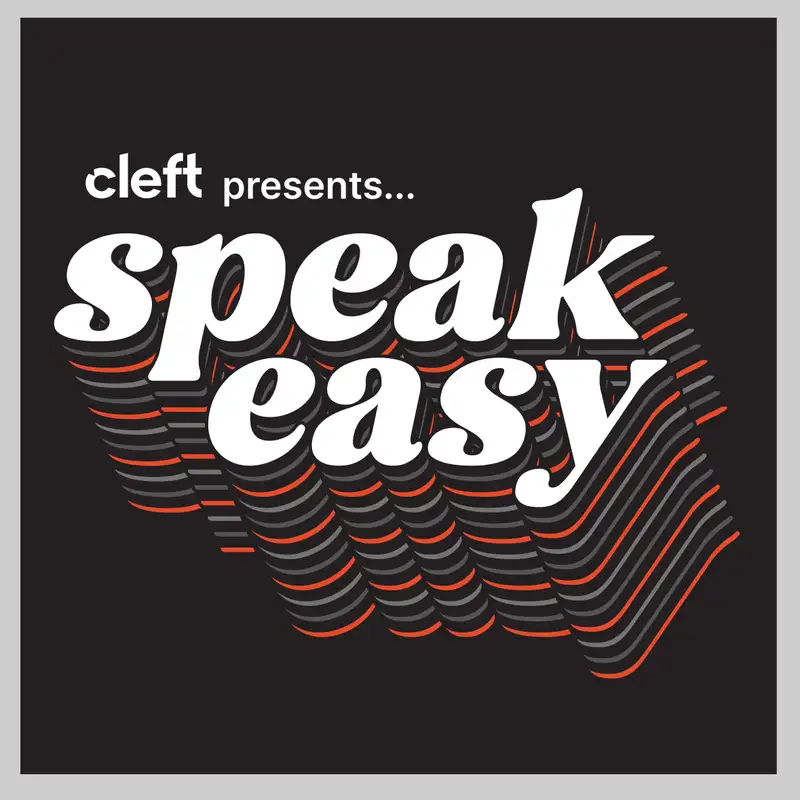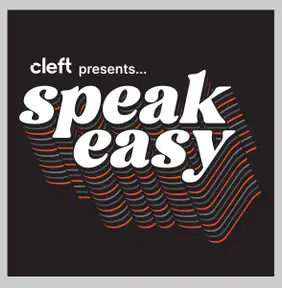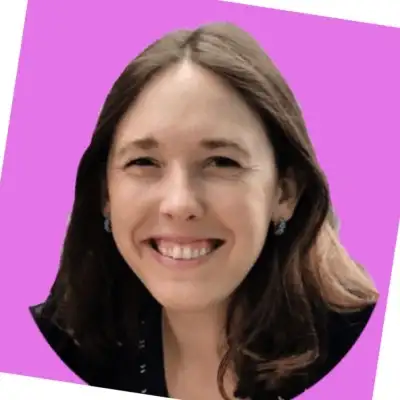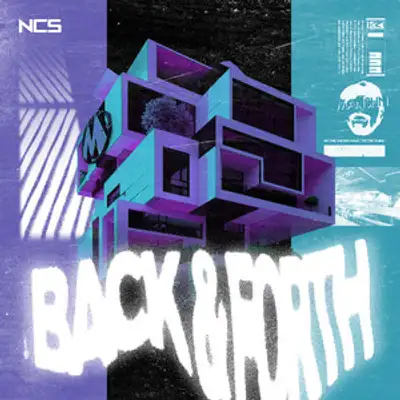Katie Scheuer, Mural
Tyler Sellhorn: [00:00:00] Hello everyone, my name is Tyler Selhorn and welcome to another episode of Speak Easy, the podcast where we discuss communication, capturing our thoughts, and how we share those thoughts with our future selves and others. Managing our brains is core to 21st century work and we're here to learn how to do it better than we did yesterday.
Thanks so much for listening. Speak Easy is brought to you by Cleft. The easiest way to collect your thoughts with our cross platform applications. You can simply capture your ideas wherever you are and paste them where they belong later. Today, we are blessed to be learning out loud with Katie Shoyer.
Katie works at Mural, a visual collaboration company. She helps teams transform how they work. Katie, I'm curious, tell us about you and your experience as a learning designer.
Katie Scheuer: Yeah, sure. I've been a learning designer. I suppose my whole career I started it as a career coach about 15 years ago, and I didn't call it learning design, right?
I would build workshops for students helping job seekers, [00:01:00] and I realized over time that I didn't want to be in a one on one conversation anymore. I wanted to have ideas that Could be scaled, right? For lack of a better word. I wanted to have a larger impact. So, right before about six months before the pandemic, it was very interesting timing.
I joined a remote work training company. So this was very niche back then. And you know, Tammy Bjelland, she's just an absolute genius. Yeah.
Tyler Sellhorn: Shout out to Workplaceless. You know, we have been introduced because of that learning and scaling your impact as a learning designer in that space of yes. Shout out to Tammy.
Katie Scheuer: Shout out to Tammy. And I just saw her this past weekend at a gig with Brian. He's playing music. It's amazing. I mean, part of what I love about the remote work community is we all can stay connected, right? Whether, whether we're together physically or remote. And that's part of what drew me to learning design with work placeless and now mural.
Because. What you're actually doing is creating a more collaborative [00:02:00] environments especially at mural where everything's visual. It's a virtual whiteboard. So the content is all in front of us. And we can be in this virtual space together. So learning design goes from being in a room with a group of students, and we're all looking at a screen, but instead we're actually connecting with each other now in this new realm of learning design.
Tyler Sellhorn: Okay, so let's start from the first layer, right? When you're thinking about building a beautiful mural board, right? Where do those ideas start for you? Like, how do we get from the surface of our brain to then the first, things that you do? As you're building a, you're going to be facilitating a meeting and you're about to build a board that works for that facilitation, where do those ideas leave your mind and become real?
Katie Scheuer: I love that question because it's similar to the work I did as a coach. The work that you do as a coach [00:03:00] or. If you're designing a meeting, it always comes from a need, right? We collectively, so for me with a client or for someone who's leading a team there's a goal that we need to accomplish together.
So once that. Goal or need or skills gap or pain point is identified. Then you can start to think about the content. But until you have a purpose for meeting, I don't recommend you meet. And this goes back to my days at Workplaceless, right? And Tyler. You and I on the async a team way back,
Tyler Sellhorn: we
Katie Scheuer: talk a lot about not scheduling meetings unless there's a purpose.
What are your takes on that? What's your take on that these days?
Tyler Sellhorn: Um, so I'm very much in the space of. Using the computer as your teammate that lets you work out, um, what it is that you act, you're saying, Hey, start with the why of the meeting before you have the meeting. And I [00:04:00] think for me one of the things that's really useful to have in your back pocket is to have a way for the computer to talk back to you.
Right. And you know, that, that is the core loop of cleft, right? Is to think out loud with your computer and it gives you back structured texts that you can share with yourself or with a teammate. And I think those are the things that I think are really, really useful. And I obviously like. We were so excited to look each other in the eyeballs today.
Right. Obviously we're doing this screen to screen here across the interwebs, like for me, the, why did I want to talk to Katie's? Cause I love thinking out loud with people that I know are smart and have, you know, learning design as their background. I guess maybe I'm going to throw it back to you.
Is that, okay. When you think of why you're going to meet with somebody and have, that shared experience of like, okay, we're going to share our screen onto a [00:05:00] mural board or, or whatever it is that we're, you know, a document that, that I think is the core experience of 21st century work is to say, okay, we're going to look at this together.
Right? What? What is the core components to that stuff? When you starting with the why? All right, well, we've got our why now. What do we put in front of our eyeballs together when you're like right now? We're looking at each other face to face. But I think of mural as a way to put ourselves shoulder to shoulder looking at the same thing.
Katie Scheuer: Exactly. And this harkens back to this framework that Tammy Jacqueline Zeller and I built at Workplaceless, which if we can maybe even drop that into some sort of link for your podcast, but it's a visual that represents a balance of synchronous time and asynchronous time. So synchronous, meaning the time that we spend together.
And asynchronous, the time that we spend working independently. And if you're going to dedicate time as a team, and because remember, it's not just about the hour that you're spending. If you're in a meeting with 10 people, that's [00:06:00] 10 hours. Of company time that, you know, leaders are paying for. So it would benefit us all if that time was spent in a very productive way.
Oftentimes, the best way to be productive is for us to come with a purpose. And usually that purpose is, you know, Number one, connecting, right? That is such a critical part whether you're hybrid or remote organizations definitely need to invest and create space for people to connect. So you're not showing up to a meeting to listen to a boring agenda.
You might be showing up to first have that moment of real time to share how everybody's feeling talk about something that's relevant. So recently the Olympics, um, or just like spend time with each other. And at mural, we always run ice breakers, but. But we really lean into that as a moment to, to really spend time.
It's not like this transactional superficial thing. So if you're on a team and you're running icebreakers and they're not landing, I would reflect on why aren't they landing? Is it, the kind of questions that you're [00:07:00] asking aren't connecting or maybe people just want something that's more casual.
So once you get past that, Moment of connection, or maybe 20 minutes of connection, depending on how much time your team needs, then you're getting into the content. And if you're going to accomplish a goal together in a virtual environment, or even a hybrid environment, where some people are in person, and some people are, you know, at home on their computers or in work, coworking spaces a single source.
Of information is a great way for everyone to collaborate. Now, a lot of teams will use something simple, like a word doc, you know, maybe you have the agenda, you're all working out at the same word doc. Somebody is taking the minutes. A more fun way to do it to me is in mural because it's visual and everybody can contribute their sticky notes or images or even draw.
And so it just, it, it creates an opportunity for everyone to have their opinions, ideas included this. Purpose to me is about inclusivity and every person's voice [00:08:00] matters.
Tyler Sellhorn: I'm wanting to lean into the collaboration space, right? Like when we're sharing these ideas in this single kind of like shared space, we're shoulder to shoulder together. We've got a great whiteboard kind of like facilitator, like managing, like what our shared mindset is going to be about this meeting.
How do we, how do we invite. Those contributions from everyone. Even in the okay we're doing this together at the same time, right? This it's the synchronous meeting, but how do we help give people the space to get their best thoughts out? How do we get their best ideas into the space where we all get to remix those things together?
Katie Scheuer: It's a great question because you bring up the point of the role of a facilitator and also the role of a designer. As a meeting owner, you might actually play both parts or if you're [00:09:00] conducting a very large complex, maybe an all hands or an onsite retreat, you might have project manager, a designer, multiple facilitators.
It could be quite complicated, but regardless for the average meeting, the person that owns the meeting is. Is going to need to take some time in advance of the meeting, whether that's a month in advance, a week in advance, a day in advance to actually think through the design of that gathering that the team is going to have.
And I say gathering because sometimes it's really not a meeting. Sometimes it's a learning session. Sometimes it's a meeting. Time for connection. And other times it's a working session. It's not always a conversation about work to be done. So whatever kind of gathering you're designing and learning in a virtual or physical environment as a meeting owner, you need to assign a designer or be a designer.
And it doesn't matter what tools you're using, right? You could use no tools and simply have a very structured agenda. And. The facilitation is the other part of that. So once you [00:10:00] have a clear agenda of what you want to accomplish, and I always recommend starting with moment or some space for connection and then moving into time boxed content, so you allocate in advance how much time you're spending on each topic that creates a bit of urgency for people to not take up too much space to contribute.
So a time box agenda of informs. And it also informs the way people are going to participate. Now, once you've designed your session, even if it's just a checklist or it could be a very complex and beautiful mural, you'll have a sense of whether the content can actually be accomplished. Like, can your tasks and the discussion points actually be accomplished in the timeframe that you have for the meeting?
And if no, I don't recommend you schedule a longer meeting. Most people don't have the attention span, right? So maybe your team. Regularly runs 30 minute meetings, a two hour meeting would be far too long. So adding in asynchronous work, meaning work people do independently to [00:11:00] contribute their ideas in advance or after the session, that is a great way to add some balance and still get all of the ideas involved.
So all of that. Design work informs the way somebody would facilitate because you don't want to show up rushed. You don't want to be cutting people off and telling them there's not enough time because if you design the meeting effectively, you're actually designing a fit for purpose experience so that everyone has time to contribute, whether it's in advance, during or after.
Tyler Sellhorn: So I am a huge fan of improv comedy. And so I'm, so, um, Katie says she is as well. All right. So I, I'm, I'm wanting to lean into this. Yes. And that I'm, that I'm hearing you say the best meetings, the ones that have the most participation are the ones that are starting, you know, The actual synchronous time with connection before that even happens is [00:12:00] a contribution that maybe is happening independently in an asynchronous way.
So I'm wanting to say, Hmm, I wonder if there's an opportunity for people to think aloud to themselves. Right of how they want to show up in the meeting, you know, using a tool like cleft or using some other dictation software or just typing on their keyboard, right as a way to contribute their ideas ahead of time.
So that the facilitators and the designers can take those things and build a shared. Experience that happens during the synchronous time. And then afterwards, everyone is going to reflect for themselves on their own. These are things that are happening in an unstructured way already, right? Like people are having like non thoughts or lots of thoughts ahead of time.
And then there's also lots of thoughts that are happening independently while we're synchronous. And there's also lots of thoughts that are happening elsewhere. I guess maybe I'm wanting [00:13:00] to think. Out loud to you to say, how do we help those things become productive? How do I, how do we help those ideas become a part of the same?
Are you we've okay. So here's a, an idea that, that, okay, maybe we're nerdy enough in the, in this moment. To start thinking about the Pensieve that where we're pulling, these, these memories and those ideas and kind of swirling them together and pulling them out of our brains and getting them into the same soup to become able to be cooked and be remixed and recipe together into something that's really useful.
How do we do that kind of idea where it's okay, everyone has these thoughts and they're useful when we put them together. How do we like think beyond those 30 minutes of that synchronous meeting to the time before and after? And how do we get those thoughts involved?
Katie Scheuer: One approach that meeting owners can take is not [00:14:00] calling it a meeting.
I really like flipping this idea that we're actually joining together to have a debrief. About the work that's already been done. Especially if folks are new to async work or they don't know what that word means, or they love meeting so much that they're really not going to do anything unless it's in a meeting.
Cause I I've worked with teams like that. We're really saying, yeah. And it's sometimes a personal preference. You know, I have coworkers that really prefer to hash out ideas out loud. And absolutely, you can do that. But if you are trying to create more space for people to contribute ideas in an asynchronous fashion, whether it's in documentation, whether you're having them connect with chat, or another type of a tool, which is very.
Modern approach AI first work means you're first working with the computer, and then you're working with people after, you know, the ideas have been filtered and edited, then you can take it to [00:15:00] humans. It's a very forward thinking way to approach work, but the ideas of meetings being the place where work gets done is not really the case anymore, especially, you know, we hear about people sending AI avatars to their meetings.
I think that's sort of silly because Well, I think why would we need to have a meeting with? It should be automated. Of course, like, the point of having a meeting is to connect with humans. Um, you know, that's just that's just me. I'm a little old school, though, as a coach, you know, people still want to connect, but you probably just don't need to connect as much.
You can go to the park instead or walk your dog or play with your kids. You Don't need to do that work. It's gonna be, you know, much more efficient. So that's my initial take. But back to your question of how do we hold people accountable to doing the work? That, that is very difficult, but having a facilitator, someone who is coming to these meetings with the intent.
To hold people accountable and everyone committing to be accountable. Every time I run a session with a client [00:16:00] or a group of clients, I always ask what they're willing to do. What what are they actually willing to do? Are they willing to do a 1 minute task, a 30 minute task? Almost everybody overestimates.
So I, you know, try to cut down their tasks to be as small as possible. I talk a lot about tiny actions. So if you get a team that's like, Oh, yeah, we can spend an hour working on this. How about you spend 7 minutes? Working on that before the meeting like that would be doable. And people probably still won't do it.
You'll have to remind them and follow up.
Tyler Sellhorn: Yeah I've heard of other people who have, struck out meetings and called it something else. Right. And, and I think that one of the things that is potentially useful is to insert time for reflection individually. As a collective group, right?
So, so maybe you do have that half hour, but you spend the first, you know, 10 minutes you're kind of like thinking to yourself about something because, our calendar is too [00:17:00] full as it is. Okay. Let's put this on the calendar for us all to do the one thing that we should have already done together.
Right. And I think there's an empathy. That's expressed in that kind of a meeting right to say, you know, what's
Katie Scheuer: optional, especially if it's optional, because deep work sessions can be very valuable, especially. I mean, when I worked with Tammy, we used to have deep work sessions blocked for tasks that nobody wanted to do.
So we would do them together and play music and have fun. But that was like, when we had to update our SOPs. And our documentation, right? A boring task, but it was important. But the time that we spent together was still optional. You didn't have to do that task during that time, because, you know, we haven't talked about this word yet, but the idea of flexibility is so important.
So some people are going to want to work with an AI based tool. Some people want to create in a visual space. Other people want to talk with another person. On the phone face to face, in a room. And what I think this new work practice, or [00:18:00] these new work practices really offer us is much more freedom.
I mean, I used to have to sit in a chair and talk face to face. I didn't have the option for all of these wonderful tools and features that could give, you know, me or anyone what they want in that moment. Now we want to actually work in pictures. Now we want to use words. Now we want the input of AI.
Now we want the input of a group. There's just more opportunity, I think.
Tyler Sellhorn: Yeah I am grateful for your influence on me to think of work in spectrums. To think of the tradeoffs on every part of the spectrum and that there is power and there is intention expressed when you say this, not that. Right. And here's why.
I think it's really important to be explicit about we've [00:19:00] chosen this meeting to have a whiteboard. Right. We've chosen to have this debrief async. We've chosen we it's all choices, right? Even when you are declaring that you're not choosing, that is a choice of its own. So, Yeah, we invite all of you listeners to be mindful of the choices that you are making or not making in the spectrum of work and whether you're going to choose to have a visual tool involved, or you're going to choose to Meet in person, or you're going to choose to be flexible about how people contribute.
These are all choices that you're making or not making. And I think that I, I guess maybe that's what I want to invite us into that space. Maybe this is where I've, every time you talk to Tyler, it's going to be in that metacognitive space. How do we make good choices about where we, fit our meetings or fit our collaboration in?[00:20:00]
Katie Scheuer: Yeah. And so much of that depends on personal preference, the constraints of your job, your team's preferences, time zones, the. Work style of your company. I mean, the physical setup of your company. So I choose to work for remote first organizations. So companies that are globally distributed because I like to work around the clock and I don't mean I'm working 16 hour days every day.
But the way that my life and work is, is very fluid, right? As a designer is someone who works with clients and creates content. My ideas. Happen at different parts of the day, depending on, you know, something I just read or who I spoke to. And so I don't like to be limited to 9 to 5. Um, and also I get most of my energy between like 6 a.
m. and 3 p. m. So, so much of my work gets done really early in the morning when I'm chit chatting with my colleagues in Europe. There's a moment of time at mural [00:21:00] because, you know, we're global, but like that 11 a. m. to 3 p. m. time slot is really good for team meetings. So that's what I'm conversing a lot.
And then I usually have a break for family. And then I might be coming back to some ideas at the very end of the day. Again, for practical reasons, depending on who's listening. Um, but also just my own schedule. Other people don't want that. Other people actually just want to be done, you know, or I work within 9 to 5.
But the whole point is that I'm not obligated to do that, the next day I might decide, no, I'm going to work a 9 to 5 schedule, or I'm going to work a 8 to 4 schedule or whatever. But that's the freedom that I have. Mural and my other organizations have offered and not everybody has that mentality.
You know, it really depends on the amount of flexibility that individuals want to need and how much their organizations are able to offer them.
Tyler Sellhorn: Okay. I want to just invite us to conclude with some. Some directed Katie sourced [00:22:00] ideas for how do we, how do we capture our ideas? How do we get the thoughts from our minds onto paper, onto a whiteboard?
What is it that we, how can we do that better?
Katie Scheuer: Well, I, somebody that I'm following a lot these days is Allie Kate Miller. She's on LinkedIn and she runs an AI company. First business and teaches about AI first business, right? Very similar to, you know, the work that I was doing before teaching and living remote work first.
So Ali is somebody that believes that you don't ever start with a blank document. I try to take that to heart. So if you're putting your ideas down on paper before you're heading in a direction too far with your notes and saying like, okay, now I'm like ready for my meeting. Okay. Interacting with a tool like chat GPT for me is very valuable because it often gives me a little bit more structure, whether I'm structuring questions [00:23:00] for a meeting with my manager, preparing for client interviews or content, like, whatever it might be, or if it's in mural.
I'm making sure that I'm pulling from existing templates, not designing something from scratch. So for me, having structures like a tool like Chachapiti or designs in Mural, it helps me see what I'm missing just from my brain dump. Another way to go about it is to take a brain dump and ask a tool to transform it into something else.
So with Mural, we have an AI hub that's coming out. You put your workshop ideas in the hub and it will build a workshop for you. So that's going to be wonderful for workshop designers because now you have your first draft. It's not perfect. You're going to go in and change a ton of things, but at least you're not starting with A 10 bullet list and a totally blank mural.
So that's, that's just how I operate. And I think having iterative loops where you're getting feedback really fast. So if it's a mural, I'm tagging my favorite coworkers and getting them to take a [00:24:00] look early on. If it's, me taking notes and talking to chat, GPT, there's a lot of.
Edits and revision and re prompting the tools so that I'm actually getting better outputs. You know, that first draft doesn't sit for very, very long.
Tyler Sellhorn: So great to hear you and your experience rhyming with ours here at Cleft. Thank you so much for learning out loud with us today, Katie. We appreciate you.
Katie Scheuer: You're welcome.




